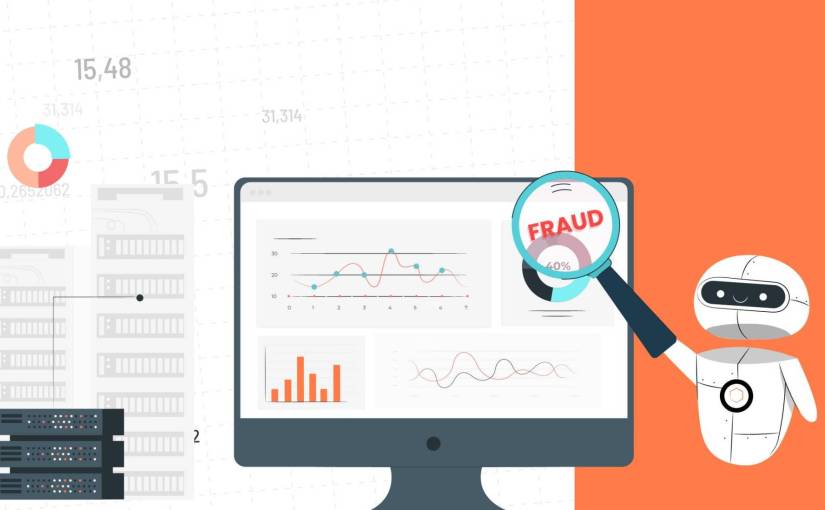You will find financial apps on a majority of smartphones. We often reach our phones to make online banking transactions or check our bank balances. Mobile apps are transforming how we used to perform financial activities, bringing convenience and flexibility to people’s lives. Banks offer nearly every possible service a user wants directly to their mobile apps. Henceforth, the need to visit the bank has reduced significantly, and there are so many customers who have not visited a bank in months or even years.
Digital Platforms in Finance
However, the injection of digital platforms in the finance industry also packs numerous fraud activities that the finance industry has to solve for users. A key solution to financial fraud detection and prevention is Machine learning.
Machine learning in Finance is actively acting as a defender against criminal activities that target acquiring money through deception. As a business, financial institutions are building robust solutions to deliver optimum security to their customers, and machine learning plays a key role in the process. As a result, mobile app developers actively integrate numerous algorithms and explicit programming to make their apps fraud free for financial institutions.
By 2026, the global Fraud detection and prevention market size is projected to reach $65.8 Billion. Additionally, the CAGR of the same will be 21.5%, where Machine learning will play a key role in making fraud-free finance apps. The question of how machine learning prevents fraud stays a curiosity for entrepreneurs. So, this article will explore the following:
- What are the major types of activities Machine learning is preventing
- How important is machine learning for financial fraud prevention?
- What are machine learning models used in fraud prevention?
- Real live cases of fraud prevention in Finance mobile apps
With the above concept, you will have the necessary knowledge required to understand fraud detection in finance apps through machine learning.
What are the major types of frauds machine learning can prevent in finance apps?
Machine learning is rapidly evolving, and there are no limitations to its growth. The scope of fraud detection and prevention covers a range of activities fraudsters do; money laundering, insurance frauds, phishing scams, and more. Here are some of the frequent financial types that machine learning is rapidly trying to solve:
Email Phishing Fraud
Some people rely on their email for professional and personal usage. With this wide usage and reliability of people on emails, fraudsters execute email phishing frauds through multiple methods. When a cybercriminal sends spam or malware in an email, it is known as Email Phishing Fraud. 96% of phishing attacks come through Email.
Such emails may contain the following:
- Unsafe links
- Request banking otps (one-time passcodes)
- Net banking passwords
Automated methods with machine learning allow the system to detect phishing attempts in advance to alert the users. A great example of the same is Gmail. The algorithms detect emails and send them to spam.
Credit Card Fraud
The cashless economy is boosting the use of debit and credit cards, where a credit card has become a primary source of shopping for users. And stealing information on credit cards is becoming an immensely popular fraud among users. The victim can notice unrecognized purchases on behalf of their credit card. Thousands of cases are filed yearly mentioning credit card fraud. Machine learning can act as a layer of security to identify if an authorized party performs the transaction or not.
Mobile Phone Fraud
Mobile phones are prone to cyber-attacks. With the NFC technology in smartphones, hackers can infiltrate your private data and steal information. Machine learning can prevent wifi based transactions by predetermining unauthorized access. Further, smart technologies like biometric-based security can prevent Mobile phone-based fraud.
Identity Theft
Websites have sensitive credentials of users. Besides, if a hacker steals sensitive information, they can pretend to be you and can initiate transactions on behalf of your identity. Additionally, users also use social platforms to sign in to multiple platforms with one click. As a result, machine learning can deliver a secure process to prevent misidentification in financial institutions.
How important is machine learning for financial fraud prevention?
Implementing machine learning brings multiple benefits to fraud detection in the finance industry. Here are the notable benefits that Machine learning offers:
Fast Data Collection
Today data is an asset for businesses. When financial institutions gather data, especially from the victims of fraud activities, they understand patterns to identify the cause of fraud. As a result, ML can collect relevant data, prepare categories and deliver insightful actions to alert or prevent fraud activities.
High Level of Efficiency
ML can execute endless programs/functions without any errors. It can easily manage massive data sets and find the source of fraudulent activities without any compromise in efficiency or hampering organizations’ time and efforts. Additionally, it also saves costs for the company.
Boosting Scalability
Financial institutions can process as much data as they want with big data technology capabilities. Eventually, ML can differentiate even the slightest difference in the data sets to deliver optimum actions to the users. As a result, when financial institutions can make use of massive data sets, it increases their scalability.
Innovative and Rapid Improvement
A great benefit of building machine learning solutions is that you can modify them according to your needs at any time. It is never a one-time investment. Further, you can keep innovating your machine learning algorithms to inject the latest trends used by fraudsters to improve your fraud detection approach rapidly.
What are machine learning models used in fraud prevention?
Machine learning technology is continuously evolving, yet some highly robust ML models are useful for the finance industry in preventing fraud.
Supervised Learning
Supervised learning is one of the finance industry’s most popular machine learning approaches. The supervised learning model is based on predictive data analysis and database management, working on data arriving from multiple sources. Additionally, the data is labeled and classified into multiple categories. For fraud detection, supervised learning can differentiate between two similar data sets to train the machine learning algorithm.
Unsupervised Learning
Unsupervised learning plays a key role in fraud detection when there is very little information available to analyze. It continuously monitors and learns from the pieces of information in multiple time stamps and variations. Finally, when the algorithm has collected sufficient data, it initiates action.
Semi-Supervised Learning
Semi-supervised learning combines both, Supervised and unsupervised learning patterns to produce optimum results. The learning model automatically switches to semi-supervised or supervised learning according to the requirements.
How PI (fraud detection solution) by PayTm works using Machine Learning?
Pi is a finance fraud detection model built by PayTm to prevent fraud for businesses and users. (Pi is the PI.Exchange), and its smart model highly utilizes a machine learning approach to deliver optimum risk prevention to users.
This is how Pi works:
- Detect: Intelligent risk scoring with a personalized approach. Every user has their own risk scores for multiple finance-related activities.
- Diagnose: Using an unsupervised machine learning approach, the fraud detection model actively monitors activities 24/7, recommending user rule sets and alerts.
PI uses high-level intelligent algorithms to give a strong fraud detection tool:
- Data ingestion
- Anomaly Detection
- Dynamic risk scoring
- Machine learning studio
- Smart Simulations
- Case management
PI is a perfect real-life example of a fraud detection tool for the finance sector showcasing efficient use of the machine learning approach.
Want to integrate fraud detection & prevention ML algorithms in your finance app?
If you want to build a finance app or want to increase the security of your finance app, an IT Solution provider can deliver an optimum fraud detection and prevention solution for your app. Machine learning and artificial intelligence (trickyenough dotcom — integrate ai in mobile) experts are passionate about integrating intelligent solutions aligning with your finance apps. These experts are extremely prominent in supervised, unsupervised, and semi-supervised machine learning algorithms according to your app development demands.
Image Credit: Provided by the Author; Thank you!



